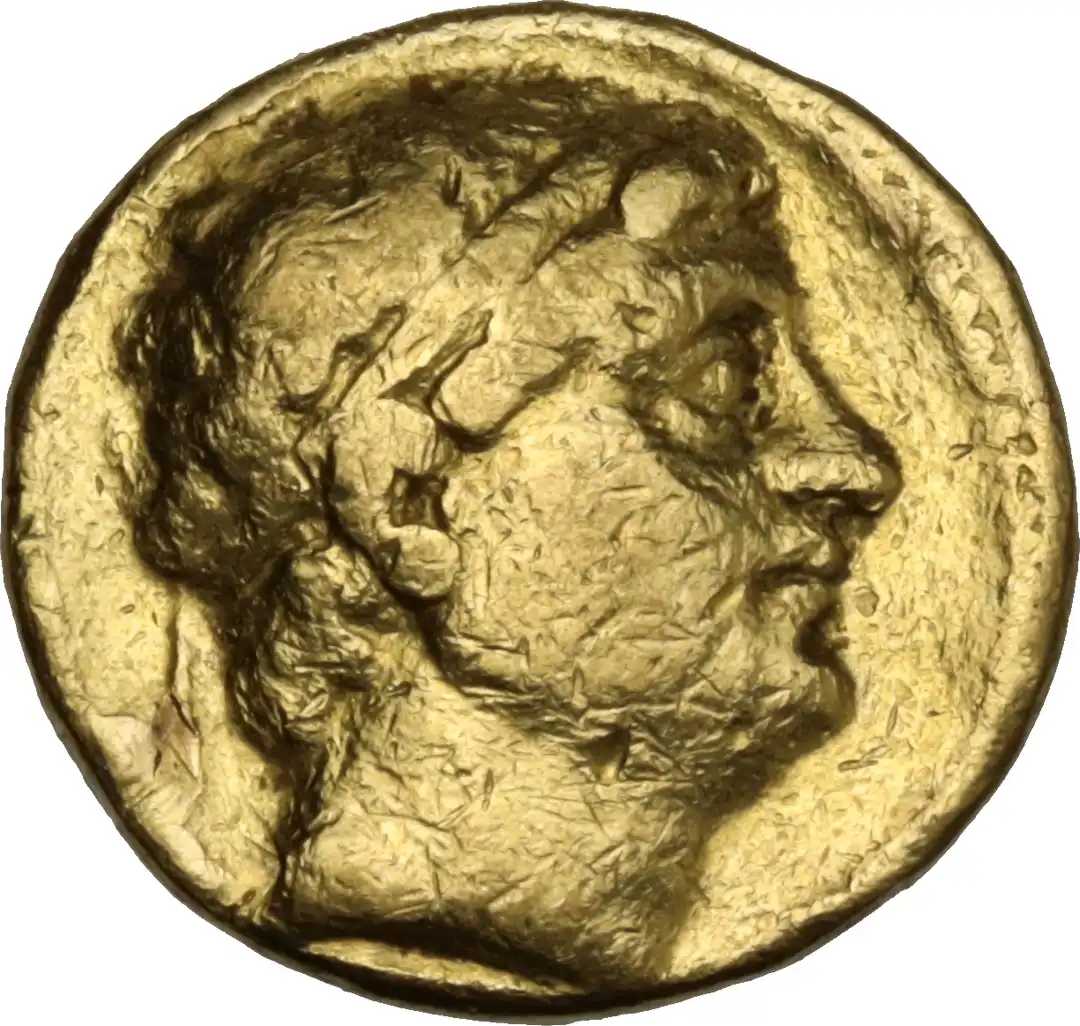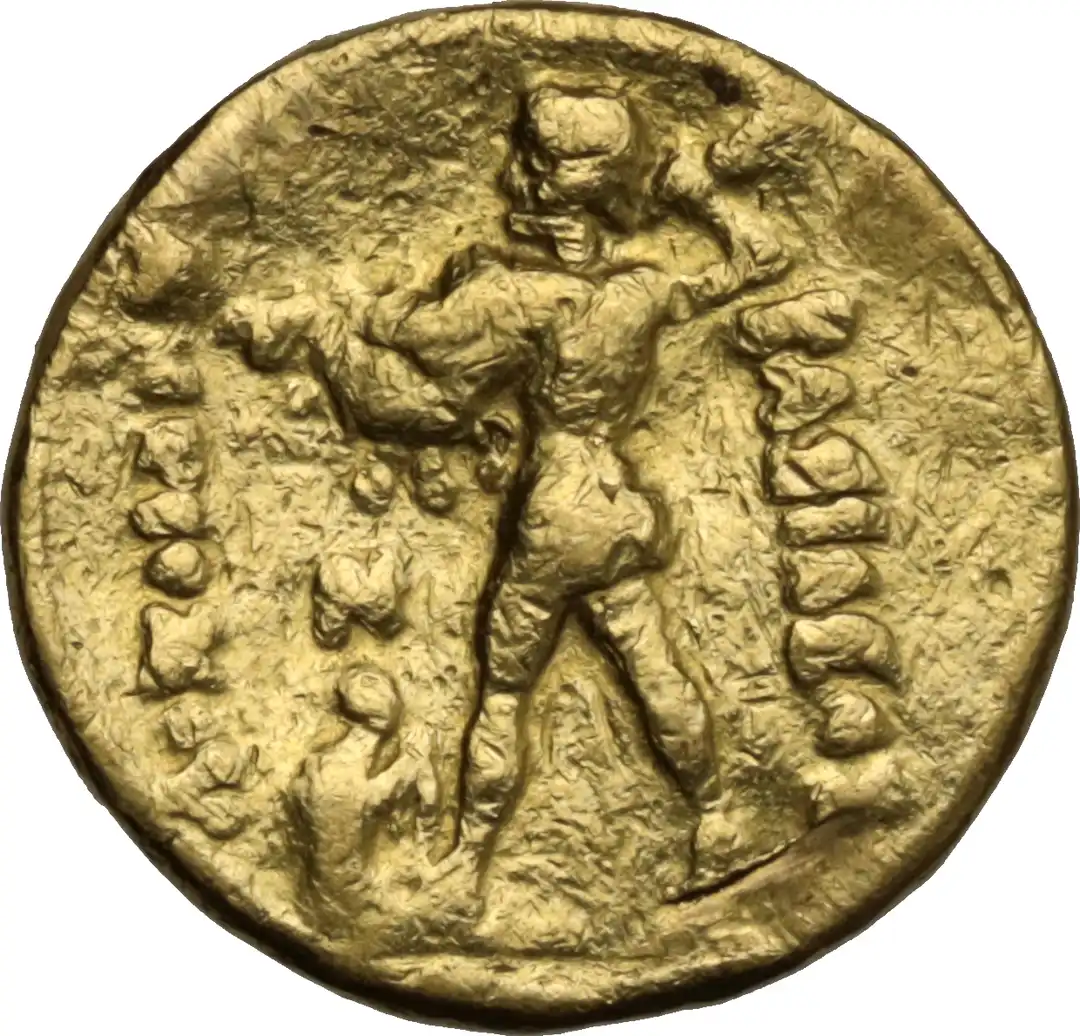









Lot 190:
Greek Asia. Baktria. Diodotos I, as Seleucid satrap of Bactro Sogdiana (before 256 BC). AV Stater, first Diodotid Mint, probably Ai Khanoum (or nearby) c. 255-246 BC. Obv. Diademed head right. Rev. ΒΑΣΙΛΕΩΣ / ΑΝΤΙΟΧΟY. Zeus striding right, brandishing thunderbolt, aegis hanging from his outstretched arm; to feet, eagle standing; in left field, N. SC 629.1; Newell ESM 713; MIG 63a; Bopearachchi Série 5b. 8.10 g. 17.50 mm. Scratches. About VF. Until about 2001, only one indisputably genuine satrapal gold stater of Diodotus I was known to exist. Recently, more have come to light, most of them marred by test cuts.
The Seleucid king Antiochus II, in whose name this coin was minted, was primarily concerned with his possessions in the Levant and Asia Minor, and he neglected the eastern satrapies - Parthia, Aria, Bactria, etc. His death in 246 BC triggered the Third Syrian War, in which the Seleucids suffered a massive defeat to Ptolemaic Egypt, losing Palestine and many thousands of men. The war meant that Seleucid armies were occupied with western affairs for five years, and ambitious Greek satraps in the East saw their chance to throw off Seleucid domination.
Diodotus likely fashioned himself early on as a kind of semi-independent governor that nevertheless was still in the Seleucid sphere. He was probably appointed satrap of Bactria in the mid-250s BC, and due to the far-flung nature of his province, was able to exert a certain level of independence, which included striking coins such as this piece with his own portrait but the name of Antiochus.
The Seleucid king Antiochus II, in whose name this coin was minted, was primarily concerned with his possessions in the Levant and Asia Minor, and he neglected the eastern satrapies - Parthia, Aria, Bactria, etc. His death in 246 BC triggered the Third Syrian War, in which the Seleucids suffered a massive defeat to Ptolemaic Egypt, losing Palestine and many thousands of men. The war meant that Seleucid armies were occupied with western affairs for five years, and ambitious Greek satraps in the East saw their chance to throw off Seleucid domination.
Diodotus likely fashioned himself early on as a kind of semi-independent governor that nevertheless was still in the Seleucid sphere. He was probably appointed satrap of Bactria in the mid-250s BC, and due to the far-flung nature of his province, was able to exert a certain level of independence, which included striking coins such as this piece with his own portrait but the name of Antiochus.
